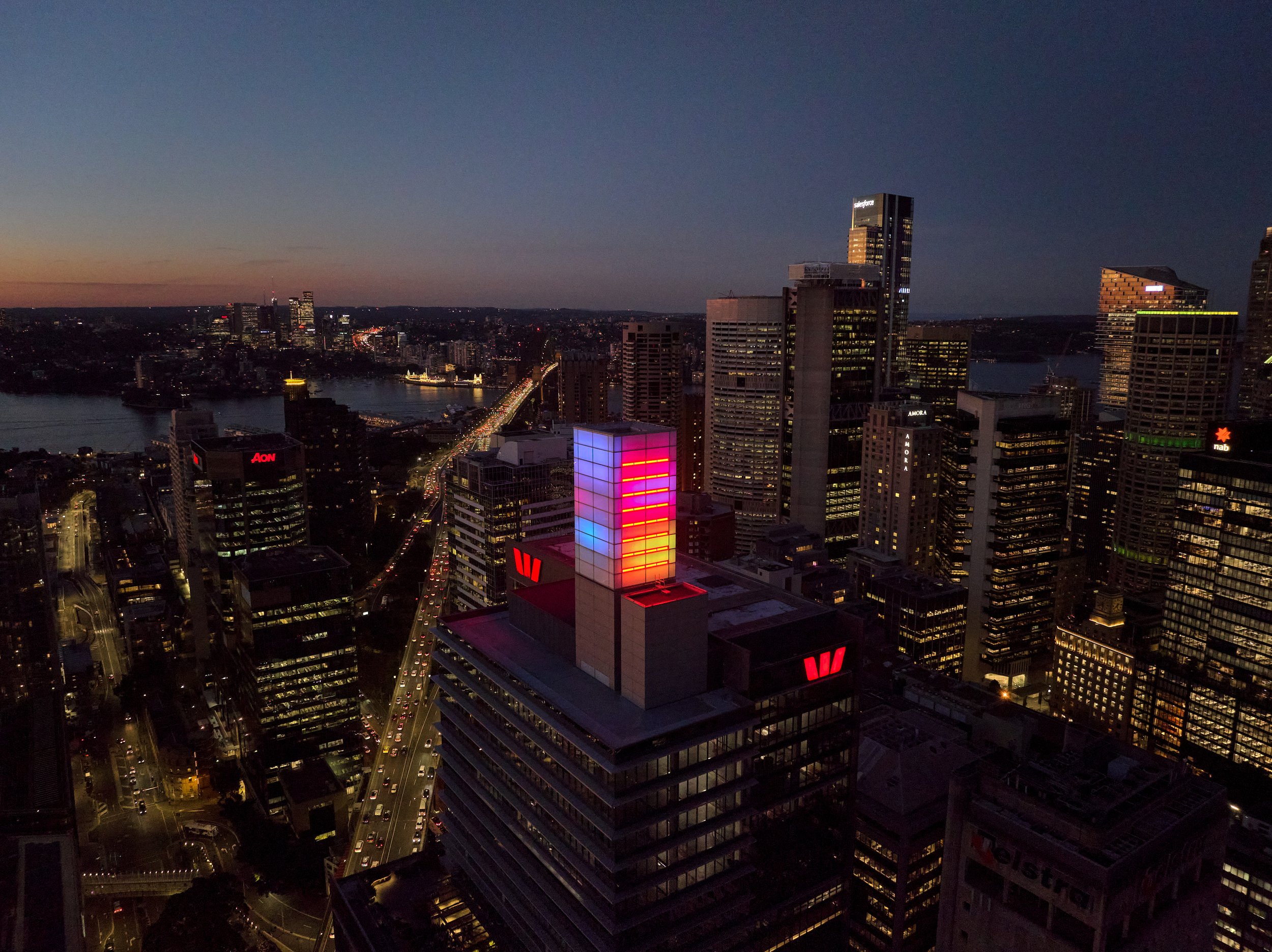Westpac Barometer
Reigniting an Icon – Smart Controls Revitalise Sydney's Westpac Barometer.
Project: Westpac Building Façade Lighting Refurbishment
Location: 275 Kent Street, Sydney, NSW
Client: Mirvac
Lighting Design & Supply: Light Project
Electrical Contractor: Elec Comm
Controls System Design, Integration & Commissioning: Martin Bevz
Original Architectural Concept: Johnson Pilton Walker (KENS Project, April 2006)
This project involved a significant refurbishment of the iconic 25-metre high rooftop "Barometer" feature on the Westpac Building at 275 Kent Street, Sydney.
Originally conceived by Johnson Pilton Walker in 2006 as a key element referencing the site's maritime history, the challenge was to replace an outdated, unreliable lighting and control system with a modern, energy-efficient, and dynamically controlled solution. The goal was not only to restore the precise original architectural vision but also to dramatically enhance its functionality, visual capabilities, reliability, and future adaptability using a fully controllable, full-colour dynamic LED pixel array, all within a demanding timeframe.
The Solution: Innovative Controls for a Smarter, Dynamic Façade
Working collaboratively with the in-house team at Light Project during the final lighting design phase, I took responsibility for the complete control system lifecycle – from conceptual design and network architecture through to commissioning, BMS integration, and the development of a custom application to drive the new full-colour dynamic LED pixel array.
The core philosophy driving the controls solution was "less-is-more," focusing on simplification of the control infrastructure to enhance robustness, ease of installation for Elec Comm, and long-term maintainability for Mirvac, while enabling complex visual output.
Key strategic decisions and implementations included:
Simplified Controls Architecture: A streamlined control system design was implemented, reducing network complexity and potential points of failure compared to more traditional, layered approaches, essential for managing the new pixel-addressable system reliably.
Live Data Barometer Applet: Moving beyond traditional hardware sensors, a custom software applet was developed. This innovative solution utilises a reliable, live weather data API feed to interpret real-time atmospheric pressure. This data is then translated into precise lighting commands for the pixel array, accurately recreating the intended visual barometer effect (990-1025 hPa range, 5 hPa increments) and the characteristic dynamic ripple effect with smooth, fluid animation impossible with the old technology. This software-based approach eliminates potential sensor drift/failure and future-proofs the installation for other data visualisations.
Strategic Casambi Integration: Casambi wireless mesh technology was employed as a novel solution for overall system management and scene triggering, offering multiple advantages:
User-Friendly Interface: Provided an intuitive app-based interface for authorised personnel for triggering pre-programmed scenes (including the barometer mode and custom colour looks) and system monitoring.
Simplified BMS Integration: Offered a straightforward pathway for high-level control (e.g., turning the system on/off, selecting major scenes) and status feedback to the existing building BMS.
Scheduling & Remote Access: Enabled easy implementation of time-of-day scheduling (replicating the original Daytime, Evening, Bed Time intent with greater flexibility and full colour control) and secure remote access for diagnostics, adjustments, and support.
Scope Compartmentalisation: Effectively isolated the façade lighting controls, simplifying the installation scope for the electrical contractor and clarifying system boundaries.
Brand-Agnostic Philosophy: Leveraging deep technical expertise, components (pixel luminaires, drivers, control nodes) were selected based purely on performance, suitability, reliability, and value, ensuring the optimal technical outcome.
Collaborative Implementation: Close, hands-on collaboration with the Elec Comm installation team ensured the controls installation precisely matched the design intent for the new pixel system, culminating in a smooth commissioning process.


